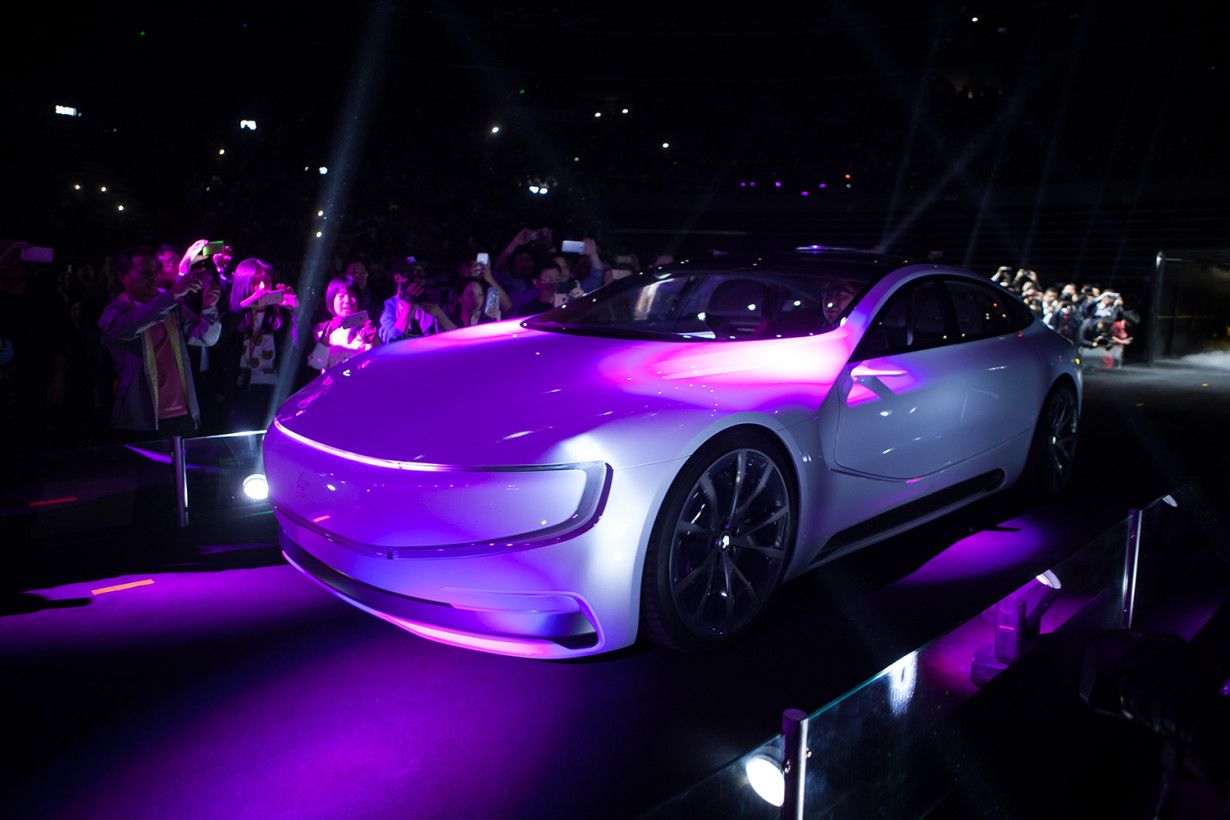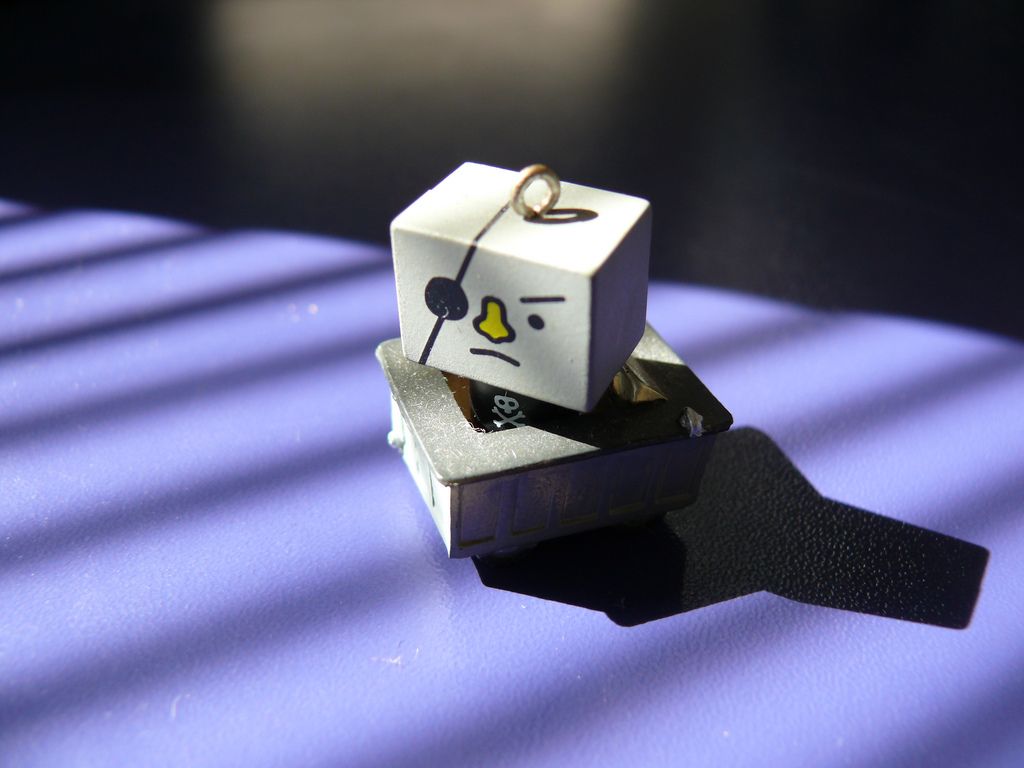Tesla may have been playing with autonomous cars for a while, but this Chinese company has taken it to the next level with this whopper.



Regulation is not the immediate problem with autonomous cars. Example, is Google car has been deemed approved by existing regs. However, the issue is the broader public’s trust due to the various reports of hacking of connected cars such as the Nissan Leaf, etc. Until we put in place a more resilient net infrastructure such as Quantum; slow down will happen. I suggest GM to read the news more because everything that I stated has been well communicated in the news and research for the past 4 months.
GM Ventures president Lauckner believes regulation will not halt the advance of the autonomous car.
Nice
A new way of making these tough materials could be a key step in producing better airplane engines and long-lasting machine parts.

Been a while since I’ve written a new article. Include my love for the Lifeboat Foundation in it!
Are we alone in the universe? Are we the first to witness the stellar bursts amongst the skies of old? Is it foretold that we were the ones destined for the stars, beginning at the Moon and then Mars? Once driving cars, do we venture far, beyond the horizon of antiquated liveliness, a surreal vibrancy-but-a-tranquillity to the origins of chaos? Without science, these imaginary realities are but dreams shuttered away in the subconscious mind. But, with this magical and logical element of human society, we are gifted with the power to envision the sleeping mind’s abstract impossibilities, transforming them into possible realities… So that we may morph the series of footsteps in waking life.
Like evolution is the guardian of change, time dictates discovery. We advance, and the nuances past become more prevalent; a new precedent set forth in every dedicated shard of time engulfed in the sublime, and rhythmic confines, of the mind. Interlinked by their commonality, the totality of the world’s abilities lays not in the futility of complacency, but in the eulogy of peaceful unity. Once we as species see the far reaches of harnessing all pieces of this puzzle [that is the international intellect], each passing day will become more perfect.

I am still not convinced that everyone fully understands how bot technology is about to change IoT and its impact to online business industry. Let me share a few ideas: Financial Auditing and accounting. Bots will be able to do a more thorough job in managing, tracking, reporting financials that many finance back office controls can be performed by bots and requiring a sign off by CFO/ Lead Controller. And, Accounting & Audit firms can easily leverage the technology to perform audits on companies remotely without having to send teams of auditors to a client’s site.
Here’s another one; I decide to set up a few 3D printers to make some unique seals for aircraft manufactures for their jets/ planes; and I need a call center plus online sales teams taking and processing orders. With bot technology my whole operation is automated and no need for sales people, call center folks, or operators. All I need is myself and couple of techies to manage the bot operations; and more profit for me and my team.
However, we still have to keep a tight oversight on hacking which is still a risk; however, we should see more micro-size companies spin up as a result of online bots and 3D printers in our immediate future.
Don’t even TRY to get Intersect Bot to talk about Trump or the Holocaust.

NEWS
SINGAPORE
This Singapore public bus service is now offering WiFi-On-The-Go.
As part of the Heterogeneous Network (HetNet) Trials, commuters can now connect to WiFi on selected SMRT Service 176 buses.
By Yon Heong Tung
12 Apr, 2016.
CARJAM TV — Subscribe Here Now https://www.youtube.com/user/CarjamRadio/videos
Like Us Now On Facebook: http://www.facebook.com/CarjamTV
For The World’s Best Car Videos.
Website: http://www.carjamtv.com
Mercedes S Class Driverless Car Is Here 2015 Commercial Self Driving Mercedes S Class W222. As the inventor of the automobile, Mercedes-Benz natural assumes a pioneering role where autonomous driving is concerned. The declared aim is to develop the automobile further, from a self-moving (“automobile”) vehicle to an independent (“autonomous”) vehicle. In its research and development activities, Mercedes-Benz goes well beyond purely technical realisation of automated driving and anticipates various scenarios.
Semi-autonomous driving is already a fact on public roads today – for example with the Mercedes-Benz models in the S-, E-, C- and CLS-Class. One such feature is Stop-and-Go Assist, which automatically follows tailback traffic and provides steering assistance. When parking with the aid of Active Park Assist, the technology chooses a suitable parking space and takes over the steering. The driver only needs to accelerate and brake. Mercedes-Benz is continuing its “Intelligent Drive” strategy with numerous assistance systems and substantially expanded functions with the aim of systematically enhancing comfort and safety. CARJAM TV. An autonomous car, also known as a driverless car, self-driving car or robot car, is an autonomous vehicle capable of fulfilling the human transportation capabilities of a traditional car. As an autonomous vehicle, it is capable of sensing its environment and navigating without human input.
Autonomous vehicles sense their surroundings with such techniques as radar, lidar, GPS, and computer vision. Advanced control systems interpret sensory information to identify appropriate navigation paths, as well as obstacles and relevant signage.[6] Some autonomous vehicles update their maps based on sensory input, allowing the vehicles to keep track of their position even when conditions change or when they enter uncharted environments.
Some quasi-autonomous demonstration systems date back to the 1920s and the 1930s.[7] Since the 1980s, when Mercedes-Benz and Bundeswehr University Munich built a driverless car through the EUREKA Prometheus Project,[8] significant advances have been made in both technology and legislation relevant to autonomous cars. Numerous major companies and research organizations have developed working prototype autonomous vehicles, including Mercedes-Benz, General Motors, Continental Automotive Systems, Autoliv Inc., Bosch, Nissan, Toyota, Audi, Vislab from University of Parma, Oxford University and Google. In 2010, four electric autonomous vans successfully drove 8000 miles from Italy to China. The vehicles were developed in a research project backed by European Union funding, by Vislab of the University of Parma, Italy. As of 2013, four U.S. states have passed laws permitting autonomous cars.
Many major automotive manufacturers, including General Motors, Ford, Mercedes Benz, Volkswagen, Audi, Nissan, Toyota, BMW, and Volvo, are testing driverless car systems as of 2013. BMW has been testing driverless systems since around 2005,[67][68] while in 2010, Audi sent a driverless Audi TTS to the top of Pike’s Peak at close to race speeds.[10] In 2011, GM created the EN-V (short for Electric Networked Vehicle), an autonomous electric urban vehicle.[69] In 2012, Volkswagen began testing a “Temporary Auto Pilot” (TAP) system that will allow a car to drive itself at speeds of up to 80 miles per hour (130 km/h) on the highway.[70] Ford has conducted extensive research into driverless systems and vehicular communication systems.[71] In January 2013, Toyota demonstrated a partially self-driving car with numerous sensors and communication systems. The Google driverless car project maintains a test fleet of autonomous vehicles that has driven 300,000 miles (480,000 km) with no machine-caused accidents as of August 2012.
Introducing… the ZR Flyboard.
First ever leaked footage of Apple’s secret electric car project.
Apple Car prototype testing at ‘Project Titan’ secret indoor facility. Recorded by unknown employee. This is the first ever leaked footage of Apple’s secret electric car.
